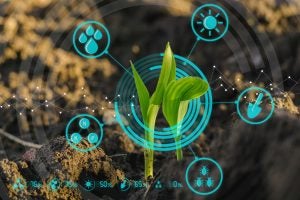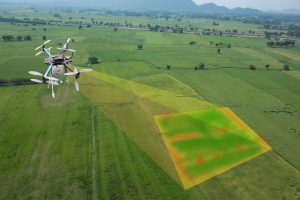From the cars we drive to the clothes we wear, never in history has there been a greater focus on efficiency in the name of environmental sustainability. Agriculture is no different. As the OGs of land stewardship and environmental sustainability, farmers have always been “green” — farming to the best of their knowledge and ability has always been at the forefront of American agriculture.
Today, knowledge and ability are translated through the technologies and data that have come to define 21st century food production. And whether the effort is conscious or not, farmers and companies alike are going “green…er” in the pursuit of feeding a growing population.
No matter which production model a farmer ascribes to, all farmers know that technology is the crux of production agriculture, inherently holding the secrets to higher yields, fewer inputs, and, perhaps, the solution to soil carbon sequestration.
But the challenges to unlocking these soil attributes through technologies are complex. Across the production agriculture value chain, ag companies and investors are also looking to technology, using research and innovation to unlock efficiencies that translate to profitability, the betterment of society, and environmental improvement … in other words, the definition of sustainability.
From the microbiome to the sky and the great expanse in between, technology is providing all farmers with user-friendly and affordable options they need to be competitive in the industry.

From the Microbiome Up
Mike Canady is no stranger to what a crop needs to reach its genetic potential and the sustainable avenues farmers can take to get there. Years of research in plant breeding led him to focus his efforts on the biostimulants that equip a plant’s roots to, themselves, farm the microbes they need to flourish.
Today, Canady serves as the Director of Agronomy for Verdesian Life Sciences, a company known for nutrient use efficiency, where he leads research efforts on technologies that are making biostimulants more affordable and easier for farmers to implement into their agronomic programs for results when they need them most.
“Biostimulants need some sort of stress trigger to really shine and do well, and what field — anywhere — doesn’t have stressors? Stressed crops are the cases where we see these biostimulant products have really, really good return on investment,” Canady says of the benefits of biostimulants. “Take, for instance, our planter box graphite-biostimulant. A farmer is already spending between 35 to 50 cents an acre. For just a little bit more, they can also incorporate stress mitigation with the same effort.”
Stress mitigation isn’t the only thing that biostimulants are bringing to the field. Canady says that a lot of what plant breeders focus on is disease resistance traits, which are most often single-gene, simple traits to bring in. On the other side of that conversation, the abiotic and environmental stress-resistance traits are very difficult for which to breed.
“A class of products like biostimulants is really the perfect way to optimize newer genetics coming onto the market,” he says about the opportunity to try new genetics with greater disease and yield advantages that may lack the stress resistance needed in a farmer’s growing region.
Whether biostimulants are applied via foliar application, in-furrow, within a tank mix or through a vehicle as simple as a squeeze bottle of graphite applied to the seed in a planter box — the technology adds another tool to a farmer’s production toolbox.

From the Sky Down
Partnerships are to ag management what soil is to ag production. Trusted advisors have never been as important to the farming operation as they are today. There’s a lot to know on the farm, and if microbiological research has taught us anything, it’s that what we know is constantly changing.
At this year’s National Conference for Food and Agribusiness, Mike DiPaola, chief commercial officer for drone imaging company Taranis Ag, told attendees that, as an industry, agriculture is on the cusp of being able to not only collect the hardest data to acquire, biological data, but to empower ag retailers and agronomists with the ability to better understand and utilize it. And that, he says, is where the true value of data collection lies.
“If we focus on how to make a trusted advisor understand information better and more quickly, then we are enabling an understanding of every acre and, at that point, it’s not about the tech. It’s about transforming relationships through improved monitoring,” DiPaola says, adding that the value proposition of building the infrastructure needed to achieve those relationships is two-fold.
“Today a retail agronomist can start their morning understanding all their farmer’s fields, understanding the stand count from the beginning, looking at field health not only derived from a satellite but also seeing visual, actual diagnosis — species of weeds and nutrient deficiencies — 20 years ago this would sound crazy,” he says. “Just a year ago, we didn’t have off-the-shelf technology that could do it. We had to invent and build the tech to do it. But our focus was never about the tech. We created jobs in a marketplace for drone service providers to be there at the right time and all of the algorithms and science. That’s building an infrastructure.”
But what is knowledge without the ability to scale it? Both biostimulants and drones put scalability into perspective, allowing growers and the retailers who serve them, to easily implement the solutions on every acre.
From a sustainability standpoint, technology is singly the most effective driver in helping farmers to go green…er. Giving them back their time, their crop performance peace of mind and helping to turn more red numbers black at the end of the year, all while simultaneously improving stewardship on the farm. It’s a win-win-win. For the environment, for the farmer and for the consumer.
Laura Handke is a freelance agriculture journalist.


